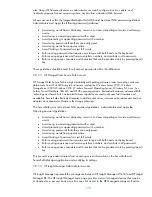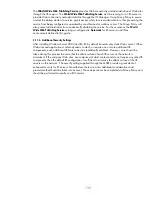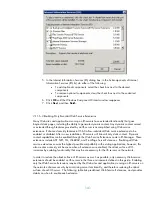
141
5.
In the Internet Information Services (IIS) dialog box, in the Subcomponents of Internet
Information Services (IIS) list, do either of the following:
•
To add optional components, select the check box next to the desired
components.
•
To remove optional components, clear the check box next to the undesired
components.
6.
Click
OK
until the Windows Component Wizard window reappears.
7.
Click
Next
, and then
Finish
.
2.11.6.2
Enabling Only Essential Web Service Extensions
Many Web sites and applications running on IIS servers have extended functionality that goes
beyond static pages, including the ability to generate dynamic content. Any dynamic content served
or extended through features provided by an IIS server is accomplished using Web service
extensions. Enhanced security features in IIS 6.0 allow individual Web service extensions to be
enabled or disabled. After a new installation, IIS servers will transmit only static content. Dynamic
content capabilities can be enabled through the Web Service Extensions node in IIS Manager. These
extensions include ASP.NET, SSI, WebDAV, and FrontPage Server Extensions. Enabling all Web
service extensions ensures the highest possible compatibility with existing applications; however, this
also creates a security risk because when all extensions are enabled, the attack surface of IIS
increases by enabling functionality that may be unnecessary for the IIS servers on the network.
In order to reduce the attack surface of IIS servers as much as possible, only necessary Web service
extensions should be enabled on IIS servers in the three environments defined in this guide. Enabling
only the Web Service Extensions required by the Web sites and applications running on IIS servers on
the network enhances security by minimizing server functionality, and therefore reducing the attack
surface of each IIS server. The following table lists predefined Web Service Extensions, and provides
details on when to enable each extension.






























